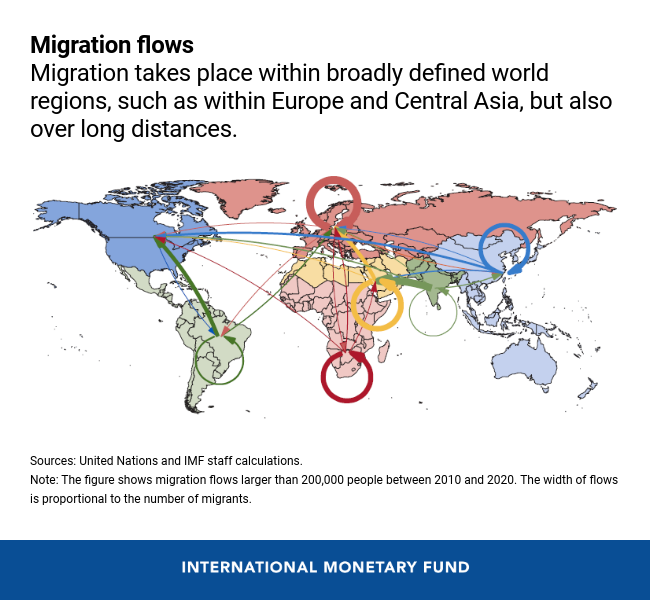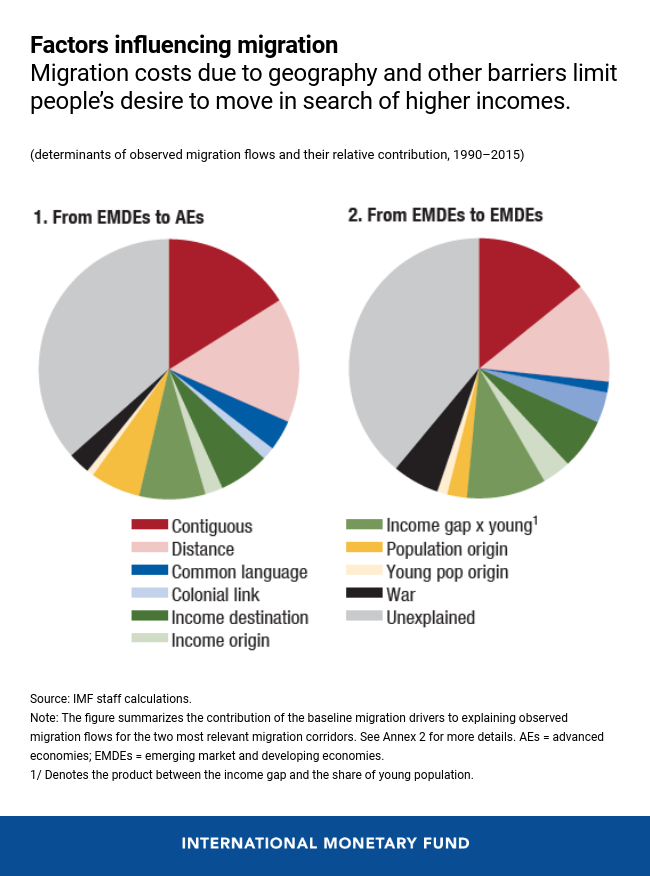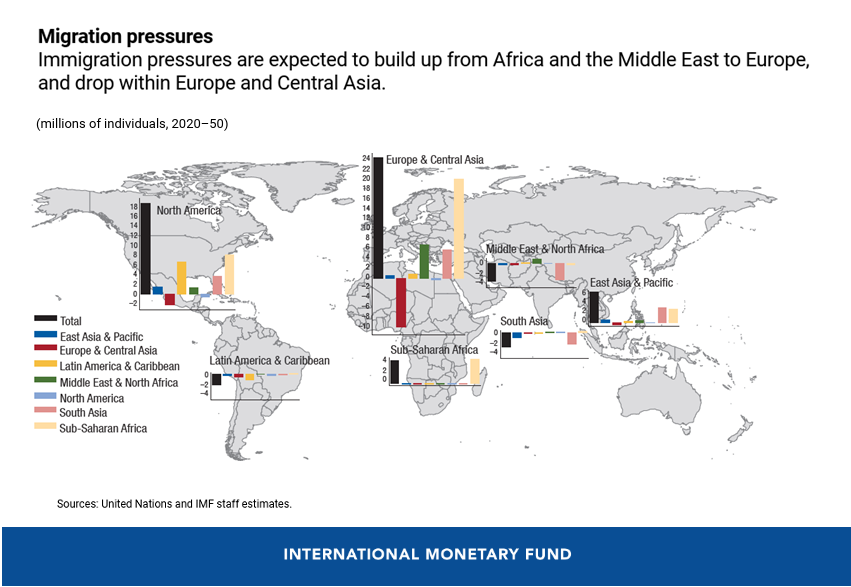Migration has been the focus of intense political debate in recent years. While most people have positive perceptions about immigrants, there are misconceptions and concerns. For instance, some think that migrants are a burden on economies.
Our new study in Chapter 4 of the April 2020 World Economic Outlook looks at the economic impact of migration on recipient countries and finds that migration generally improves economic growth and productivity in host countries.
Immigrants in advanced economies increase output and productivity both in the short and medium term.
But the pandemic has led to an abrupt stop to migration. While the Great Lockdown is temporary, the pandemic may add to a general sentiment of reticence and disbelief in openness and have longer term effects on countries’ willingness to receive migrants. Less immigration and high unemployment in destination economies would hurt origin countries, especially poorer ones, that rely significantly on the remittances that migrant workers send back home.
Putting migration into perspective
In 2019, 270 million people in the world were migrants—defined as people not living in their country of birth. The migrant population has increased by 120 million since 1990. However, the share of migrants in the world’s population has hovered around 3 percent over the past 60 years.
Strikingly, the share of immigrants in the total population of advanced economies has risen from 7 percent to 12 percent, while the share of immigrants in emerging market and developing economies has remained at around 2 percent.
Migrants often settle within their home region. However, a significant part of international migration takes place over long distances (for example, from South Asia to the Middle East) and, in particular, from emerging market and developing economies toward advanced economies.
In contrast, refugee migration is a more localized phenomenon as vulnerable populations leave home suddenly with few resources and travel to a safe destination, usually close to the home country. Emerging and developing economies are therefore both the origin and the main destination of refugees.
Push and pull factors
Emigrating to another country is very costly, which explains why only a very small fraction of the population migrates. The costs of migration include geographical and linguistic barriers, which together explain a large share of the variation of migration flows.

A major reason why people migrate is income differences between origin and destination countries. Richer countries attract more immigrants, especially from countries with younger populations. Countries with lower per capita income experience more emigration, but only if they are not too poor. We find that when per capita income at the origin is below $7000, countries with lower incomes have lower emigration toward advanced economies. This suggests that people get trapped in poverty since they are deprived of the resources needed to overcome migration costs.
Wars mainly explain migration between emerging and developing economies—corroborating the importance of geographical proximity for refugee flows. Lastly, and importantly for the analysis of future migration pressures, the size of source country populations is a key driver of migration flows.
Economic impact
Our analysis looks separately at the effect of overall immigration (which is mostly driven by economic reasons) into advanced economies and refugee immigration into emerging market and developing economies.
We find that immigrants in advanced economies increase output and productivity both in the short and medium term. Specifically, we show that a 1 percentage point increase in the inflow of immigrants relative to total employment increases output by almost 1 percent by the fifth year.
That’s because native and immigrant workers bring to the labor market a diverse set of skills, which complement each other and increase productivity. Our simulations additionally indicate that even modest productivity increases from immigration benefits the average income of natives.
However, the positive impact of productivity is not visible for refugee immigration to emerging market and developing economies. This reflects the difficulties that these migrants face in integrating into local labor markets.
Future migration pressures
The population in emerging market and developing economies (in sub-Saharan Africa in particular) will continue to rise over the next 30 years and migration pressures toward advanced economies are likely to increase. For example, the chart shows migration pressures building up from Africa and the Middle East to Europe between 2020 and 2050. However, global migration pressures will remain roughly constant at 3 percent of the world’s population.
Higher incomes in emerging market and developing economies will reduce migration pressures. But, as already discussed, this is not necessarily the case for poorer countries, like those in sub-Saharan Africa, where rising (though still low) incomes may enable more people to emigrate.
Other pressures (explored as alternative scenarios) will also impact migration. For instance, climate change is expected to lead to a significant increase in internal and regional migration in emerging market and developing economies. At the same time, our findings suggest that its impact on migration toward advanced economies is less clear-cut, given that lower incomes in many poorer countries may “trap” more individuals in their region of origin.

Magnifying the gains
Migration brings big gains to recipient countries and provides an opportunity for a better life to migrants. However, it may also create distributional challenges, as native workers in specific market segments could be hurt economically, at least temporarily. Fiscal and labor market policies should therefore be used to support the income and retraining of those natives facing labor market difficulties.
Moreover, active labor market and immigration policies geared toward integrating immigrants, such as language training and easier validation of professional titles, can help build even better outcomes from immigration in recipient countries.
Finally, international policy coordination is needed to tackle the challenges from refugee migration. This includes sharing the costs from hosting refugees and fostering their integration with emerging and developing economies.
Based on Chapter 4 of the World Economic Outlook, “The Macroeconomic Effects of Global Migration,” by Philipp Engler, Keiko Honjo, Margaux MacDonald, Roberto Piazza (team leader) and Galen Sher, under the guidance of Florence Jaumotte.
You can listen to the podcast here:






